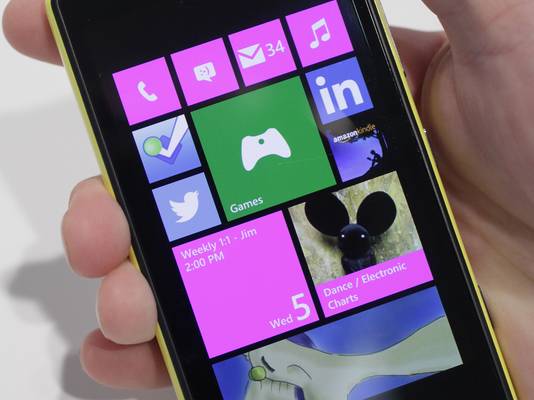Why Nokia's 3-D printing move braces future
Nokia has just done something pretty unusual: it's invited its users to effectively tailor an element of its smartphone hardware to their individual needs.
As a Friday present for its more enterprising fans, the Finnish firm announced the release of what it calls a '3D-printing Development Kit', or 3DK, for the back shell of its Lumia 820 handset. Here's how Nokia community and developer marketing manager John Kneeland described it:
"Our Lumia 820 has a removable shell that users can replace with Nokia-made shells in different colors, special ruggedized shells with extra shock and dust protection, and shells that add wireless charging capabilities found in the high-end Lumia 920 to the mid-range 820.
"Those are fantastic cases, and a great option for the vast majority of Nokia's Lumia 820 customers. But in addition to that, we are going to release 3D templates, case specs, recommended materials and best practices — everything someone versed in 3D printing needs to print their own custom Lumia 820 case."
This makes Nokia unique among major handset manufacturers, at least so far. Yes, there are many 3D-printing schematics out there for iPhone cases, for example, that use Apple's official specifications. However, they are not part of the iPhone.
Embracing inevitability
What Nokia has done here is to invite a certain type of user to build a component of its product. In doing so, the company is hewing to its historical course of openness – you know, the one it was so keen on before the Microsoft partnership, when it tried to accelerate development of the Symbian platform by open-sourcing it. That was all about software, and Nokia messed up by not being timely in its code releases.
This is about hardware, and Nokia can rightly claim to be in the vanguard here. Bear in mind that Lumia smartphones run the closed Windows Phone platform — by partnering with Microsoft rather than Google, Nokia sacrificed openness on the software side. By releasing the 3DK (a neat term, by the way), the company is reintroducing that customizability in its hardware and potentially stimulating a whole new ecosystem that may actually feed back to its own internal development efforts.
Nokia is effectively outsourcing rapid prototyping to its customers. As Kneeland puts it: "You want a waterproof, glow-in-the-dark phone with a bottle-opener and a solar charger? Someone can build it for you — or you can print it yourself."
But there's another aspect to this that Kneeland doesn't mention. If you view the mass adoption of 3D printing as an inevitability – whether it be through people all owning their own 3D printers or, more likely, paying by usage at a local 3D-printing store – then it follows that many more people will start ripping out and replacing static components of various devices, such as smartphones.
If that happens, then many less skilled practitioners of the art will start messing up said devices with parts that just don't fit as well as they should. Nokia's 3DK release should reduce that risk for customizers of Lumia 820 phone shells, making it more likely that they will remain satisfied with the overall product experience. It's like releasing a solid SDK, only for hardware, and it's a smart move on many levels.
This story was previously published on GigaOM[1].
More from GigaOM
HP cloud chief's exit sparks more confusion[2]
References
- ^ http://gigaom.com/2013/01/18/why-nokias-3d-printing-move-embraces-the-future/ (gigaom.com)
- ^ http://gigaom.com/2013/01/18/hps-cloud-chief-exits-sparking-more-confusion/ (gigaom.com)
- ^ http://gigaom.com/2013/01/18/sharp-cuts-ipad-display-production-will-ipad-mini-be-the-bigger-hit/ (gigaom.com)
- ^ http://gigaom.com/2013/01/18/a-new-site-that-aims-to-make-solar-shopping-ultra-simple/ (gigaom.com)










